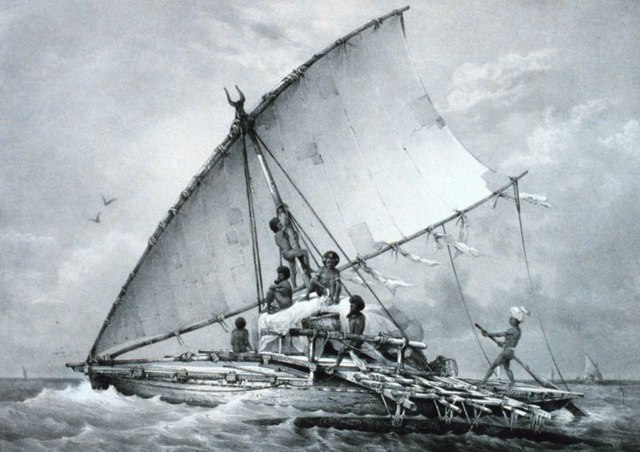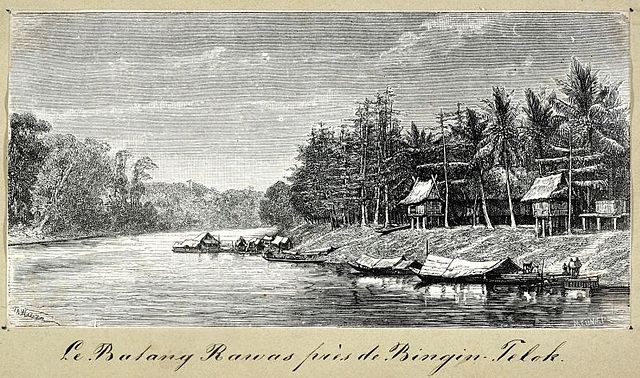The history of Madagascar is distinguished clearly by the early isolation of the landmass from the ancient supercontinent of Pangaea, containing amongst others the African continent and the Indian subcontinent, and by the island's late colonization by human settlers from the Sunda islands and from East Africa.
These two factors facilitated the evolution and survival of thousands of endemic plant and animal species, some of which have gone extinct or are currently threatened with extinction.
Trade in the Indian Ocean at the time of first colonization of Madagascar was dominated by Indonesian ships, probably of Borobudur ship and K'un-lun po types.
An Austronesian outrigger canoe; Malagasy vahoaka "people" is from Proto-Malayo-Polynesian *va-waka "people of the canoe". The Vahoaka Ntaolo, the first Austronesian ancestors of the Malagasy, probably used similar canoes to reach the great island from the Sunda Islands
Vaγimba- "Those of the forest" in Proto–Southeast Barito, the reconstructed ancestor of the Southeast Barito languages, which includes the languages spoken by the Dayak peoples of the Barito River in Borneo.
Men in an Outrigger Canoe Headed for Shore, an oil painting by Arman Manookian depicting the Vezo people, c. 1929
A Sumatran village showing several traditional houses (Malagasy levu). The vahoaka ntaolo villages of Madagascar were probably similar in the first millennium AD. This model is still currently present on every coast and in the remote inland areas and forests.
Malagasy is an Austronesian language and dialect continuum spoken in Madagascar. The standard variety, called Official Malagasy, is an official language of Madagascar alongside French.
Sorabe Malagasy Arabic script
Malagasy version of the Book of Mormon, in Latin script with the letter ô
Malagasy lexicon (1773) (Collection BULAC Paris)







